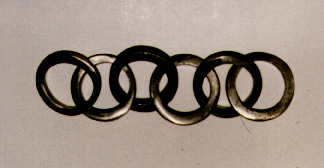Examples and Applications

Figure 1
Examples
- This part of the project deals with specific example problems of phase diagrams. Most come from the book used in MSE2034 and 2044, however; we have gone into more detail about how to find information using the problems. Tie lines (also called isotherms) are used to determine the phase compositions at any point on the phase diagram. The lever rule is used to find the relative amounts of the phases present at equilibrium. Binary Isomorphous and Binary Eutectic systems are covered, both with and without incongruent phase transformations. Incongruent and Congruent phase transformations have to do with allotropy. An introduction to phase diagram basics starts with the triple point of water and then leads into more challenging phase diagrams.
Applications
- The result of the information aquired from the phase diagram transforms into real life applications. Some of these applications are visually apparent in everyday life, while others are rarely seen. Here you can see the results of calculating the properties of an alloy and then which alloy was used for specific applications.
Additional Applications
- Si-C; Silicon-Carbide Ceramic
- Ni-Cr-Fe; Stainless Steel and Inconel (tm)
- Nd-Fe-B; Neodymium-Iron-Boron Magnets
Contracts:
Ballentine,
Gamboa,
Johnson,
Norwood,
Oborn,
Storaska,
Williams
Andrew Johnson 4/30/96
http://www.eng.vt.edu/eng/materials/classes/MSE2094_NoteBook/
96ClassProj/examples/frontexa.html
Project Homepage

